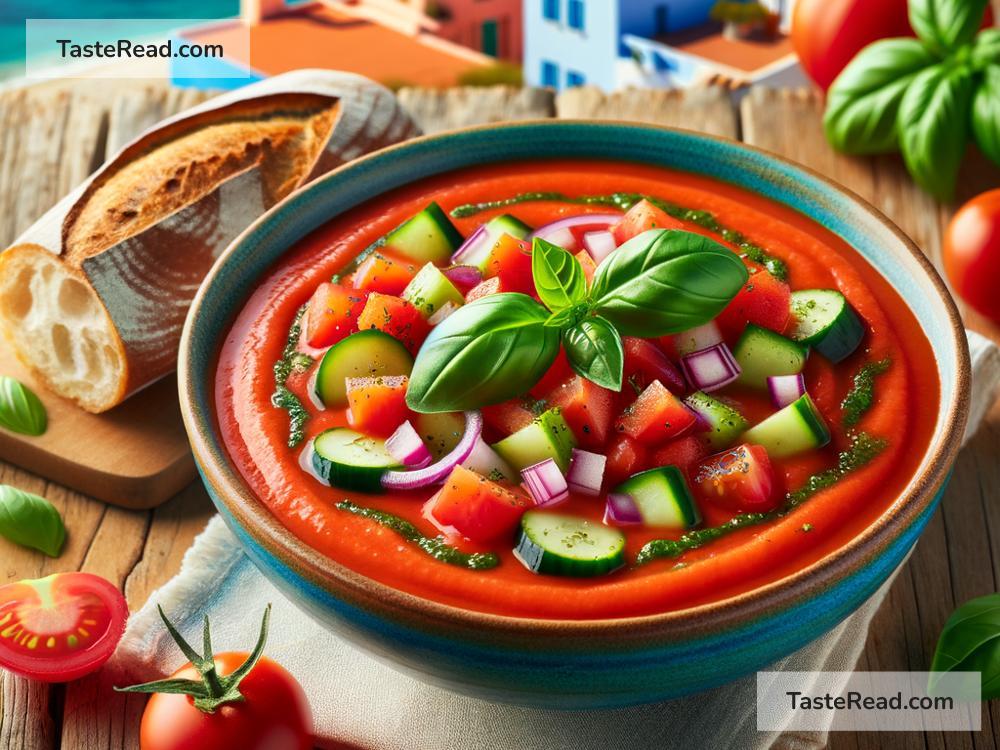Celebrating the Cultural Blend of Spanish Gazpacho Innovations
Spain is famous for its vibrant culture, stunning landscapes, and diverse cuisine. Among its culinary gems, one dish stands out for its simplicity and refreshing appeal: gazpacho. This chilled tomato-based soup originated from Andalusia, a sunny region in southern Spain, and has since become a global favorite. Over time, gazpacho has evolved beyond its traditional recipe, blending flavors and ideas from around the world. Today, let’s celebrate the cultural mix and creative innovations that continue to breathe new life into this iconic dish.
A Brief History of Gazpacho
Gazpacho has humble beginnings. In ancient times, Andalusian farmers would prepare a simple dish using stale bread, olive oil, vinegar, and garlic. This mixture didn’t include tomatoes yet because tomatoes weren’t brought to Spain until the 16th century, after they were introduced from the Americas. Once tomatoes became a staple in Spanish kitchens, the classic gazpacho we know today took shape.
Traditionally, gazpacho is served cold, making it the perfect dish for hot summer days. The original recipe combines ripe tomatoes, cucumbers, bell peppers, garlic, olive oil, vinegar, and sometimes a slice of bread to create a creamy texture. It’s a dish that celebrates fresh produce while staying simple and affordable.
Gazpacho Goes Global: A Fusion of Cultures
As gazpacho gained popularity outside Spain, chefs and food enthusiasts began experimenting with flavors, textures, and ingredients. These innovations reflect the cultural mix that comes with globalization. Let’s explore how gazpacho has been reimagined in creative ways around the world.
-
Asian-Inspired Gazpacho
Some chefs have infused gazpacho with flavors from Asian cuisine, adding ginger, soy sauce, or sesame oil for a unique twist. A dash of spicy sriracha can boost the soup’s heat, while ingredients like edamame or crispy seaweed offer exciting new textures. By blending Spanish tradition with Asian flavors, gazpacho transforms into a bold fusion dish that reflects the global exchange of culinary ideas. -
Tropical Gazpacho with Caribbean Flair
Adding tropical fruits like mango, pineapple, or papaya introduces a sweet and tangy flavor to gazpacho. These fruits are loved in Caribbean cooking and bring a refreshing touch to the classic recipe. Pairing them with jalapeños or lime juice enhances the tropical feel, creating a gazpacho that tastes like sunshine in a bowl. -
Middle Eastern Touches
Middle Eastern cuisine is known for its flavorful spices and fresh herbs. Innovations like adding cumin, coriander, or fresh mint to gazpacho can create a unique hybrid of Spanish and Middle Eastern tastes. Using yogurt or tahini instead of bread introduces creaminess while staying true to the concept of a chilled, refreshing dish. -
Modern Superfood Gazpacho
With the rise of superfoods, gazpacho has found new ways to embrace nutrition trends. Ingredients like kale, avocados, chia seeds, and quinoa are added to give the soup extra health benefits. These versions celebrate wellness and creativity, proving gazpacho can adapt to the demands of modern lifestyles.
Regional Variations in Spain
Even within Spain, gazpacho has inspired regional variations that highlight local ingredients and traditions. In Salmorejo, which is popular in Andalusia, bread and tomatoes are blended into an ultra-creamy soup, often garnished with boiled eggs and ham. In Extremadura, ajo blanco replaces the tomatoes with almonds and garlic for a milky-white version of gazpacho. These localized adaptations showcase how the dish reflects the cultural richness even within its homeland.
Why Gazpacho Has Universal Appeal
There’s something magical about gazpacho that makes it beloved around the world. First, it’s incredibly versatile. You can customize the ingredients to suit your preferences while still holding onto the spirit of the recipe. It’s also healthy, being packed with vitamins, minerals, and antioxidants from fresh vegetables and fruits.
Most importantly, gazpacho reminds us of the beauty of simplicity. Whether it’s made using the traditional Andalusian method or with modern twists and innovations, the heart of gazpacho lies in its ability to bring people together through food. With every recipe, gazpacho tells a story of creativity, cultural exchange, and shared traditions.
Tips for Making Your Perfect Gazpacho
Want to try making gazpacho at home? Here are some simple tips to get started:
- Use Fresh Ingredients: Gazpacho relies on the natural flavors of fresh produce. Choose ripe tomatoes, crisp cucumbers, and fragrant herbs for the best results.
- Blend Your Flavors: Be adventurous! Incorporate global ingredients like ginger, lime, or avocados to develop your own unique gazpacho twist.
- Serve Chilled: Gazpacho tastes best cold. Let it chill in the fridge for a few hours before serving to ensure it’s refreshing and flavorful.
- Garnish Thoughtfully: Add toppings like croutons, chopped vegetables, or a drizzle of olive oil for added texture and visual appeal.
The Cultural Joy of Gazpacho
Gazpacho is not just a dish; it’s a celebration of cultures coming together. From its roots as an Andalusian recipe to its modern versions inspired by global cuisines, gazpacho shows us how food can connect people across borders and traditions. It’s proof that simple ingredients have the power to unite, inspire, and delight.
So, whether you’re enjoying a bowl of classic gazpacho or experimenting with unique flavors, take a moment to appreciate the cultural blend that makes this dish truly special. After all, gazpacho is more than a soup – it’s a story of innovation, creativity, and the joy of sharing good food.


